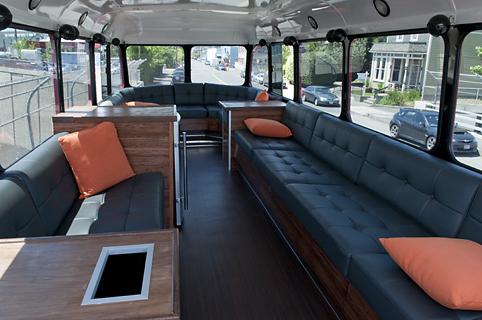Bus of small class PAZ-32054: history and description
The bus of small class PAZ-32054 is one of thethirty modifications of the basic model of the most mass bus of Russia in the 90's and 2000's PAZ-3205. A distinctive visible feature is the two-door layout of the interior, but if you look deeper, then a number of technical innovations will come to light. After the stage-by-stage modernization the vehicle became more reliable, the consumer characteristics and the motor resource increased.

Modest toiler
In December 1989, at the Pavlovsky plant named after. A.A. Zhdanova (Nizhny Novgorod region, Pavlov) was launched into the series at the "life" became the legendary model of the suburban and city bus of small class PAZ-3205. They can be found in every city of the country, because this four-wheeled worker became the most mass bus produced in the country. In total, more than 30 modifications of this model have been developed, ten of which are produced serially. One of them is the bus PAZ-32054.
Despite the modest appearance, a brisk "pazik"proved its usefulness in the crowded streets of cities, and on suburban routes with a small passenger flow, and as a special transport in organizations, enterprises, educational institutions of various profiles. And two automatic doors PAZ-32054 is much more convenient than one.

A bit of history
25 years ago, no one imagined thatonly just got on the conveyor PAZ-3205 is not only prepared for a bright life, but also an opportunity to break the record of the longevity of its predecessor - PAZ-672. The bus was not a consequence of the planned upgrade of the model range. On the contrary, it was the result of the refusal to produce a more perfect PAZ-3203 model, the components for which could not be supplied by related organizations. The designers of the plant found a compromise solution - they combined the new body with the old chassis, naturally, having carried out all the possible improvements over the latter.
The first prototype PAZ-3205 was assembled in the summer1979, only after a decade entered the series. Despite a significant percentage of the unification and external similarity with the 3203, 3205 buses differed in the layout of the cabin and had a number of design differences on the body. A year later the factory workers presented the predecessor of the modern PAZ-32054 - a two-door modification of the PAZ-32051.
Design Features
The basic chassis has become common to alla large family of new "pazikov." One of the significant features is the original pneumohydraulic braking system, which made it possible to eradicate one of the main problems of the PAZ-672 - insufficient efficiency of working brakes with a hydrovacuum drive. The steering mechanism also changed: the application of the "screw-ball nut" type with the built-in hydraulic booster (from MAZ-5336) allowed to reduce the number of flexible hoses by 60%, increasing the reliability of the unit operation.
The suspension did not go unheeded: the narrowing of the spring track allowed to reduce the turning radius, and the elongated front springs together with the adjustment of the correcting springs in the rear suspension increased the smoothness of the stroke. The design of the body of most of the executions was the same. This also applies to PAZ-32054, whose photo, if you close your eyes on the additional door, like two drops of water, looks like PAZ-3205 images. In 2013, after a light restyling, the design of the headlights changed - they became rectangular.

The PAZ-32054
Technical characteristics of this modificationsignificantly improved in comparison with the base model. The body got two doors in the middle and at the end of the cabin. Unlike the standard one-door variants, this innovation greatly facilitated the landing and disembarkation of passengers and increased the safety of the vehicle: in the event of an accident or a technical problem, people can be more quickly evacuated from the passenger compartment. Due to the appearance of additional doors, the location of the seats has changed, and the number of seats has slightly decreased.

Power point
Initially, under the hood, it was decided to installtwo variants of power units - petrol and diesel. If gasoline (produced by ZMZ and MMZ) have proved themselves well, then unexpected problems have appeared with diesel engines. As the diesel units were considered domestic GAZ-542 and Japanese Hino W04CT. The first diesel "paziki" came to the test in 1987, but because of the complexity of the layout, the "gas" engine came off the distance almost immediately, and the expensive Japanese diesel was put into the PAZ-32054 only on order from the beginning of the 90s.
Also the direction of driving on liquefiedgas. Back in 1987 technical specifications and technical documentation for a bus with propane gas-cylinder equipment, prototypes of which were built in 1987-1989, were prepared. Finishing works on these machines were carried out jointly with the designers of the plants PAZ, GAZ and ZMZ.
Now PAZ-32054 (technical specifications are given below) has two types of execution:
- actual modification 32054 with gasoline engines produced by ZMZ;
- 32054-07 with petrol ММЗ.
The table shows the characteristics of each model:
32054-07 | 32054 | |
Motors | MMZ D-245.9E2 MMZ D-245.9E3 MMZ D-245.7E2 | ZMZ 52342.10 ZMZ 5234.10 |
Power, l. from. | 130 130 117 | 124 130 |
Speed (max), km / h | 96 (Class II) 85 (class I-II) | 90 (class II) 80 (class I-II) |
CPR | SAAZ 136 or SAAZ 3206 | GAZ-3307 |
Cylinders | 4R | 8V at an angle of 90 ° |
Norms of ecological compatibility | Euro-3 | Euro-3,4 |
PAZ-32054: Features and Benefits
- Body type: bearing, wagon configuration, all-metal.
- Number of passenger seats: 18-23 seats, 38-43 common.
- Width / length / height: 2530/7000 / 2880-2940 mm.
- It is distinguished by the reliability of the suspension on any roads.
- Improved consumer characteristics.
- High maintainability.

Conclusion
A simple, easy-to-repair design,compact size, economy, high payback and low (relative to competitors) cost allowed the "pazika" to win the hearts of operating organizations and passengers.








